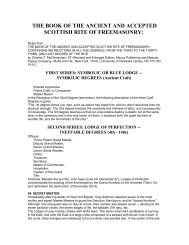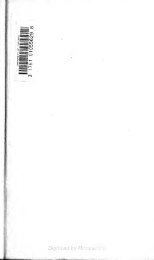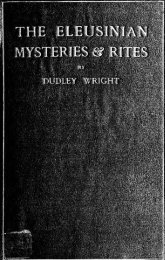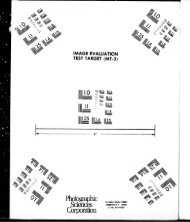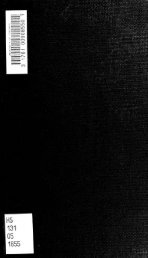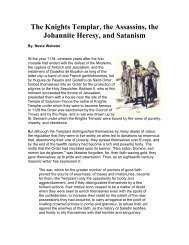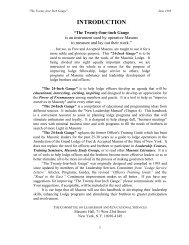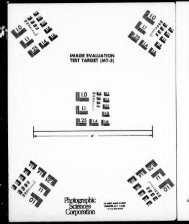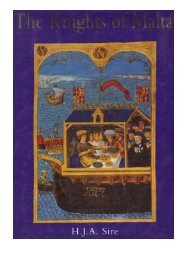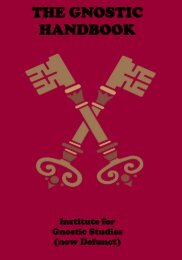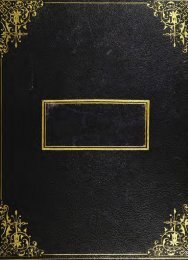Scottish Rite Masonry Illustrated - The Masonic Trowel
Scottish Rite Masonry Illustrated - The Masonic Trowel
Scottish Rite Masonry Illustrated - The Masonic Trowel
You also want an ePaper? Increase the reach of your titles
YUMPU automatically turns print PDFs into web optimized ePapers that Google loves.
440 SUBLIME PRINCE OF TILE ROYAL SECRET. PrITIATION. 441<br />
of which was published by Gronovius in his Latin editiDn<br />
of Agostini, representing Mithras, with one foot<br />
on the body and the other between the horns of a Bull,<br />
are seen a Lion’s head and two palm trees just putting<br />
out their Icaves, a Raven and an Eagle on a palm tree<br />
holding a thundcrbolt in his claws. It is this thunderbolt<br />
which has been, in our symbol, corrupted into a<br />
sword, with a crooked and wavy blade.<br />
Mithras himself was often represented with the head<br />
of a lion.<br />
<strong>The</strong> palm tree was not only an emblem of virtue and<br />
truth, but it was also consecrated to the celestial movements,<br />
and abovc all, the annual revolutions of the<br />
Sun.<br />
Among the Hebrews, it will be remembered, the lion<br />
~vas borne on the crimson standard of the tribe of<br />
Judah. <strong>The</strong> Ox, on the green standard of Ephraim.<br />
<strong>The</strong> Eagle on the green standard of Dan, and the ship<br />
on the purple standard of Zebulon. Perhaps the Ark<br />
of the Covenant is really the Ark of the Deluge, or the<br />
ship of Zebulon.<br />
<strong>The</strong> inflamed winged heart is probably the winged<br />
globe or sun, a common symbol in Egyptian temples<br />
and an emblem of imn~ 7ortality.<br />
<strong>The</strong> figure 525 on the golden collar of the lion had<br />
originally, no doubt, a meaning connected with the<br />
number of degrees or perhaps with an Epoch in the<br />
annals of <strong>Masonry</strong>, but for the present at least, that<br />
meaning is lost.<br />
Nor have we been able to discover the origin of the<br />
several letters which designate the tents of the nonagon<br />
and the standards of the pentagon. Others possessed of<br />
more extensive learning may hereafter succeed in doing<br />
so, and also in unveiling the hidden meanings of<br />
the names of the commanding officers. We might pretend<br />
to do so, and give you, as others have done, arbi-<br />
trary and perhaps unmeaning explanations, without<br />
any warrant but that of our own inlagination. <strong>The</strong>re has<br />
been too much of that in <strong>Masonry</strong>, and we prefer to be<br />
satislied with the little that we know, and to leave the<br />
rest for future investigation.<br />
It will be noticed that the seven watch-words for the<br />
different days of the week, all of them names of persons,<br />
correspond with the number of sides of the heptagon,<br />
and that if they were assigned to command there,<br />
they would make the number of commanders complete.<br />
<strong>The</strong>se seven names are curiously enough, those of three<br />
Persian kings, Darius, Xerxes and Cyrus. <strong>The</strong> Macedonia<br />
n conqueror Alexander, Ptolemy Philadelphus,<br />
one of his successors, Herod, the tributary Roman king<br />
in Judea, and Jewish king, Hezekiah, while all the answers<br />
are the names of Jewish prophets. <strong>The</strong> name of<br />
Ilerod and those of Xerxes and Ptolemy Philadelphus<br />
seem wholly out of place in <strong>Masonry</strong>.<br />
<strong>The</strong> names of the Commanders of the nonagon; one<br />
Phaleg goes back to the building of the tower of Babel;<br />
one Aholiab, to the building of the first tabernacle, one<br />
JoRhua, is the name of the successor of Moses, one<br />
Johaben, is fictitious, one Jehoiada, is that of the Jewish<br />
High Priest, in the time of Jehoash and Athaliah,<br />
and three, Zerubbabel, Ezra and Nehemiab, refer to the<br />
rebuilding of the temple, while the one remaining is<br />
the name of the last prophet.<br />
Of the names of the five Chiefs of the standards,<br />
two Bezaleel and Aholiab, were those of the Architects<br />
of the tabernacle of the desert, Mahuzen or Masshin,<br />
which means in Latin, “Haesintantes” that is, hesitating,<br />
it is not the name of a person. Amariah was a<br />
common Jewish name, or if it be Emerk, the meaning<br />
is not known, and Garimont or Guarimond, was the<br />
Patriarch of Jerusalem, between whose hands the first



